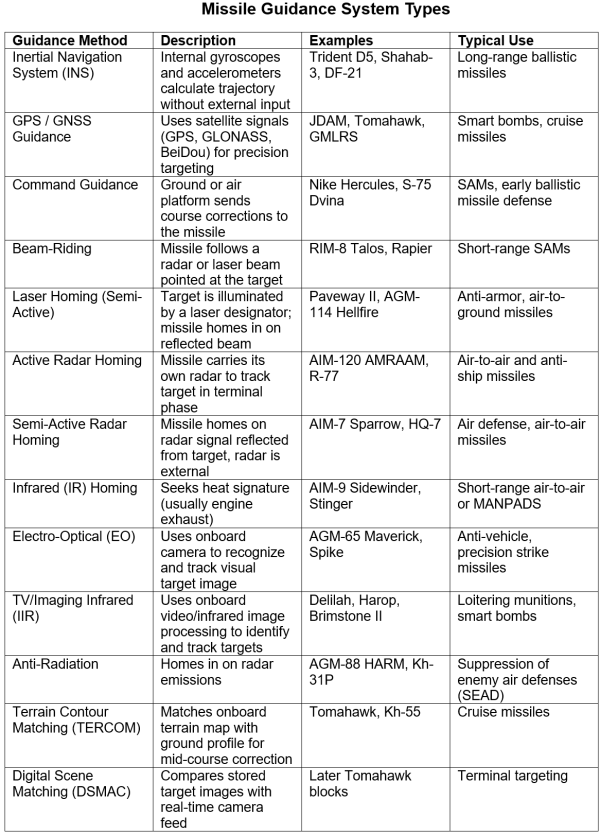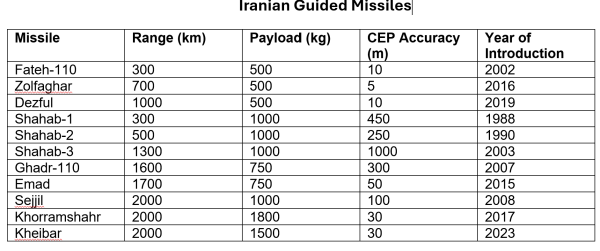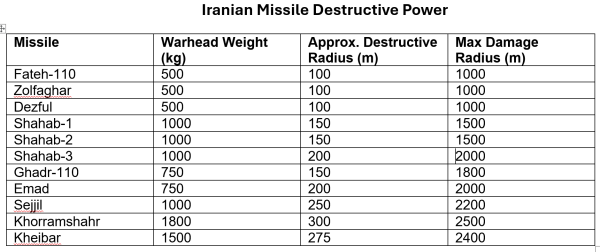Circular error probability (CEP) is the metric weapons designers use to describe the accuracy of munitions. CEP is defined as the radius of a circle, centered on the intended target, within which 50% of projectiles or warheads are expected to land. As guidance technology has advanced, CEPs of modern missiles and drones have grown smaller. I will describe this evolution, its relevance to the current Mideast conflict, and its long-term consequences.
The grim technology of weaponry is full of engineering tradeoffs. For most of the history of of gunpowder and high explosive armament, the path to increasing the effectiveness of weapons has been scaling up their explosive power and rate of delivery in order to overcome limits to accuracy. The larger the explosive bomb or shell, the greater the radius of damage it can inflict. The higher the rate of fire of a gun or gun battery, the more chances that a projectile will hit a target. Since WWII, this tradeoff has changed to substituting increased accuracy for explosive power and rate of fire. This has the advantages of reducing the number of projectiles needed to destroy a target and minimizing collateral damage.
It is a macabre fact that the first effective guided missiles were the Japanese Kamikaze aircraft. Japanese pilots, at the cost of their lives, inflicted massive damage on U.S. Navy forces in the last years of WWII. There had been experimental attempts at radio control of German anti-aircraft rockets in WWII, but these were never deployed. Both Germany and the U.S. deployed crude guided glide bombs (Hs 293 and ASM-N-2 Bat) and used them to sink a few ships, but these weapons had little effect on the war. The German V2, the first ballistic missile, had an early inertial guidance system that delivered poor accuracy (17 Km CEP).
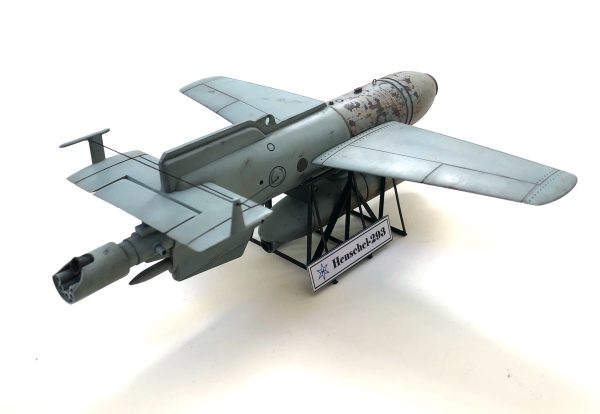
German WWII HS-293 radio guided anti-ship glide bomb
In the decades since WWII, great advances have occurred in missile accuracy, mainly because of the rapid development of advanced electronics. Today, there are many technology choices for precision guidance of weapons. Medium range missiles can now theoretically achieve a 10 meter CEP, which is sufficient to destroy almost any fixed target. Short-range drones and missiles are even more accurate. Moving targets pose a greater challenge to guided weapons because they generally require a skilled human operator to guide them, but advances in machine vision promise to enable autonomous drones and missiles that can identify and effectively attack vehicles and other moving targets without human intervention.
The vast defense expenditures of global superpowers funded the development of increasingly sophisticated precision guided munitions (PGM). This technology has proliferated to smaller nations, and it is now on center stage in the current hostilities between Israel and Iran. Israel has used air-launched PGMs to strike at hundreds of targets in Iran, and Iran has responded with ballistic missiles accurate enough to inflict substantial damage on major Israeli cities. The Iranian missiles have shattered Israel’s reputation of possessing impregnable defenses, and this will likely encourage other Mideast nations to build substantial missile arsenals. The era of Israel’s military dominance in the region may be approaching an end.
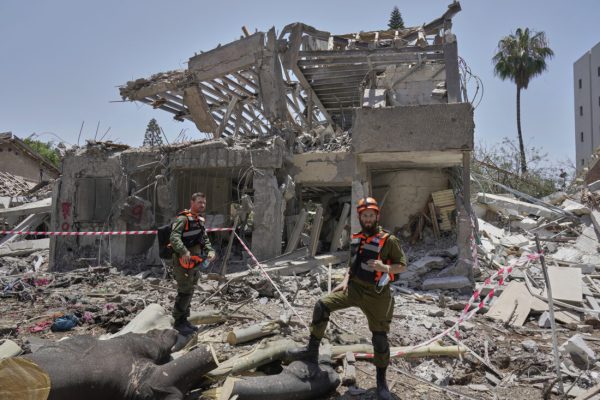
Missile strike aftermath in Tel Aviv
Enter BeiDou
One of the best means of guiding long-range PGMs to fixed targets is satellite navigation. It operates in any weather conditions and requires only a satellite link in the missile and a relatively simple control system. Like the U.S., Russia and China have developed and deployed satellite navigation systems for both civilian and military use. In 2015, Iran’s electronics firm Salran signed agreements with Chinese counterparts to integrate BeiDou satellite navigation into Iranian missiles and UAVs. By 2021, Iran had reportedly been granted full military access to China’s BeiDou system. Recent Iranian MRBMs, such as Kheibar Shekan, feature maneuverable re-entry vehicles with satellite navigation systems, indicating use of BeiDou for mid-course and terminal guidance. This is what enables a CEP of under 30 meters for the most accurate Iranian ballistic missiles.
Growing Risks
Every nation has vital infrastructure that is poorly protected against missile attack. The advent of mass-produced precision missiles and drones creates new opportunities for asymmetric warfare. Small nations no longer need large and costly aerial armadas to conduct powerful strikes against regional adversaries. Missile arsenals require lower operating costs and fewer highly trained personnel than aircraft fleets. Drones and small missiles are effective weapons for clandestine operations inside enemy territory. They are easily smuggled and highly effective, as evidenced by Israeli decapitation strikes in Iran and Ukrainian attacks on Russian airbases. As these weapons become available to criminals and terrorists, precision guided drones will make the world more dangerous.

Israeli assassination strike with PGM
Conclusion
The widespread proliferation of highly accurate, precision-guided missiles and drones is inevitable and it will create serious challenges to world peace. Asymetric warfare and regional conflicts are likely to become more destructive as PGMs deliver devastating blows to critical infrastructure, military targets, and leadership personnel. The U.S. has opened a Pandora’s box of violence by funding and arming fractious groups around the world, and these groups will increasingly utilize PGMs, some of which may end up aimed at the U.S. A new generation of arms control treaties and export restrictions is called for in order to curtail this threat. As CEPs get smaller the danger to the world grows larger, and that is precisely the problem.



